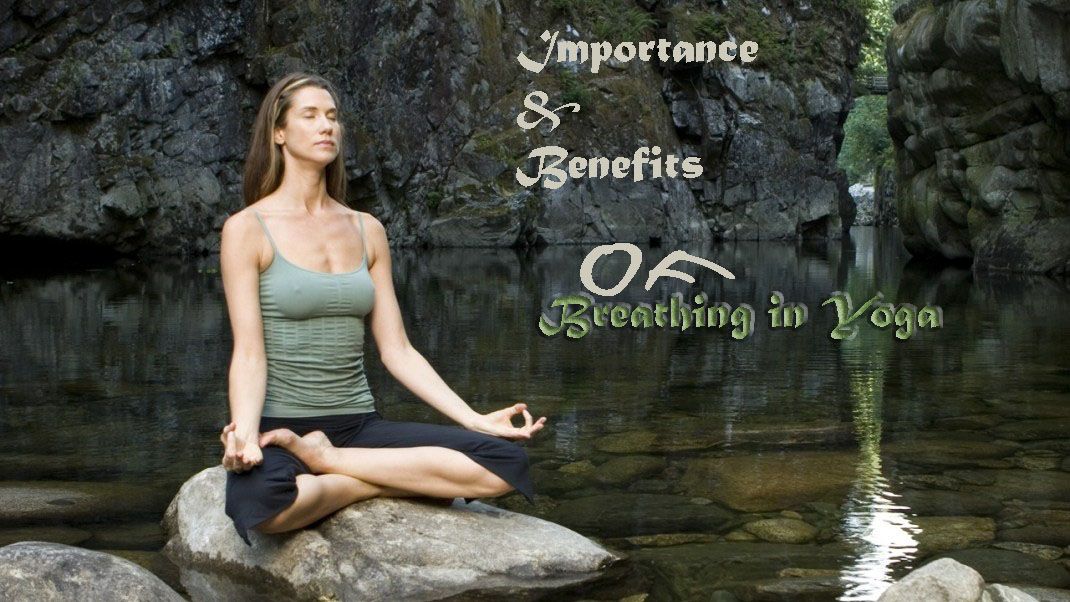
The Importance and Benefits of Breathing in Yoga and Meditation
Whenever your mind disperses, use your breath to take your mind back into your hand. It is precisely the awareness of breathing that makes yoga a spiritual and beneficial discipline and not any other practice of gymnastics. Many of us don’t know the importance and benefits of breathing in yoga. Let’s discover.
Importance and benefits of breathing in yoga
If you have ever practiced meditation or if you have been practicing yoga for a long time, you will certainly have noticed the close correlation between the mind and the breath.
What happens to the breath when the mind is agitated?
It is easy to notice that when you are stressed, you are anxious, you are afraid of something or you are not at peace with yourself, the breath is agitated and becomes both more superficial and quicker.
Of course, this correlation can be noticed even when you perform any breathing exercise ( pranayama ).
What happens to the mind in this case?
When the breath is labored, the mind is also unstable. But when the breath calms down, the mind does too, and the yogi reaches long life. Therefore, one must learn to control the breath.
Breath and asanas
Have you ever wondered what happens when you perform yoga postures using conscious breathing? Biologically speaking, during the practice of asanas it happens that the control of respiration, which usually occurs in the brainstem, moves towards the cerebral cortex (a more evolved part of the brain) and it is this change that allows you to be aware of breathing. It is precisely when this happens that you start doing yoga.
From the physical point of view, on the other hand, the breath is correlated with the body structure you have. Every time you practice any yoga position, and you are going beyond this structure, beyond your limits and beyond your behavioral habits, the breath changes. Being fully aware of the breath for all your practice, you can go beyond your physical limits and go beyond the so-called comfort zone.
You should be aware of the breath not only when you hold a position, but also when moving between positions. The movement associated with breathing in yoga is called Vinyasa.
From an emotional and energetic point of view, conscious breathing is essential to dissolve emotional blocks or energy stagnations.
When you practice the asanas and breathe consciously, you allow all the various parts of the body to breathe, even those where usually the breath does not arrive. It is precisely when the breath arrives in a part of the body that is “emotionally” or “energetically” blocked that the blocks melt.
Mindful breathing in yoga
Whenever you practice yoga and perform positions, you should use what is called complete yogic breathing. This consists of breathing fully and consciously, combining three types of breathing:
- Abdominal (or diaphragmatic) breathing
- Thoracic breathing
- Clavicular breathing
In normal life, we breathe mainly using the diaphragm and the other areas of the chest are rarely involved. When you get on your yoga mat instead, you should know and practice these three breaths together. In this way, the conscious breath can reach areas where it usually does not arrive.
However, before practicing them together, it can certainly be useful to do appropriate exercises that allow you to learn each of these breathing techniques separately. Once you dominate each of these breaths, it will be easier for you to combine them in the practice of asanas.
Ujjayi breath
Ashtanga Vinyasa Yoga, a breathing technique is used, which I think is fantastic for maintaining awareness of the breath for the duration of the practice.
This technique is called Ujjayi, a term that translated means ” the victorious breath,” ” the breath that leads to victory.”
This breathing consists involuntarily closing the glottis, a membrane that allows air to remain longer in the larynx.
This small change in breathing has many beneficial effects during practice:
- The air overheats, and this makes the gas exchange more efficient.
- It allows you to have more control over your breathing.
- Helps focus the mind during practice.
Thanks to the sound that is produced when you practice this technique, you become much more aware of your breathing.
importance and benefits of breathing in meditation
Conscious breathing is not only important in the practice of asanas, but it is also fundamental in meditation. In fact, keeping the attention on the breath is the basis of many meditation techniques such as Vipassana and Mindfulness.
As already mentioned in the first paragraph, when you sit and watch your breath, you are actually observing your mind. Doing this seems like child’s play, but when you sit on your meditation pillow, it’s a different story.
The mind goes where it wants, runs afterthoughts, it is always between past and future, pain arises, emotions come out, and it does not take long to realize that awareness is a quality that is difficult to develop. It is difficult but not impossible.
The important thing is that you don’t give up when you realize your unconsciousness and that you focus attention on your breath every time your mind gets distracted.
For the correlation explained above, becoming more aware of your breathing during meditation means becoming more aware of your mind and in general of everything that happens inside you.
Awareness is considered the best weapon to combat so-called avidya, spiritual ignorance. Now that you know the importance of conscious breathing, I hope that you spend even more time than your days practicing yoga and meditation, trying to be more aware of your breathing.



